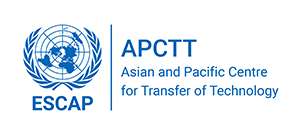Wireless Sensor Networking in a New Level
Our partner, a Hungarian University has developed a new wireless mesh networking technology that is suitable for an array of applications from smart metering purposes to environmental monitoring, medical sensors, or automatization. They are interested in a sales agreement, a license agreement or a joint venture opportunity. Background information: Wireless mesh networking solutions have many advantages in flexibility over wired solutions, but they also have different technological challenges. For example in smart metering, most solutions use wired Power Line Communication, which needs an infrastructure and fix placement. However wireless solutions are completely mobile, can be installed freely, but their communication should be protected against interception and manipulation of transmitted data. This is an issue also in wired technologies. Mobility also draws the question of power source, which is usually a battery that needs to be replaced over time, so energy efficiency is a key factor. Another important question is visibility of wireless nodes, which is determined mainly by the frequency, and transmission power used. The frequency affects transmission range and throughput, signal-noise ratio and penetration. Innovation of the technology: The invention is a wireless mesh networking technology suitable for an array of applications from smart metering purposes to environmental monitoring, medical sensors, or automatization. The protocol uses industry standard secured multi-hop channels to propagate information to the server. Compared to other standards the protocol stack remains lightweight in spite of the capabilities included. The protocol uses on-demand approach for data transmission, which minimizes management overhead. The technology has built-in guarantees for reliable information transfer. Due to the hierarchical network topology, the solution is highly scalable. Utilizing the properties of 433 MHz frequency band, the range is six times better (indoor and outdoor) then other well-known technologies like Wi-Fi or ZigBee, and has the advantage of better penetration through concrete and water. Energy efficiency is a key factor in the protocol of technology; the devices remain in sleep mode as much as possible to maximize battery life, which can be measured in years.
Sector: Electrical & Electronics
Country: Hungary
Area of Application: • Environmental monitoring; • Medical sensors; • Automatization; • Smart metering
Keywords: Wireless; Sensor networking
Advantages: • At 433 MHz, the technology is available in every major trading nation of the world. At 2.4GHz ZigBee has the benefit of being available in all nations but at the cost of using a frequency that is crowded, unreliable, short-range, and has limited ability to penetrate walls, concrete and water. • The technology is designed to provide long battery life and low device cost for bursty, asynchronous applications that require multi-year battery life. ZigBee’s focus is on applications that can benefit form high data rate and shorter battery life. • The devices are in sleep mode for most of the time and only wake as they need to transmit and receive data, so battery life can be measured in years. ZigBee has no RF wakeup and uses a complex scheduling mechanism for communication and more energy to transmit at higher bandwidths. • The technology has 6 times the range of ZigBee, and the ability to penetrate concrete and water as the benefits of 433 MHz.
Environmental aspects: Not Applicable
Development Status: Commercial Prototype
Legal Protection: Patent
Technical specifications:
Transfer Terms: Technology Licensing , Research Partnerships
Target Countries: World Wide
Estimated cost (US$):
Upload any relevant document:
Contact Person: Laser Consult Ltd (Hungary)
Address: H-6701 PO Box 1191.
City: Szeged
Country: Hungary
Zip/Pin Code:

